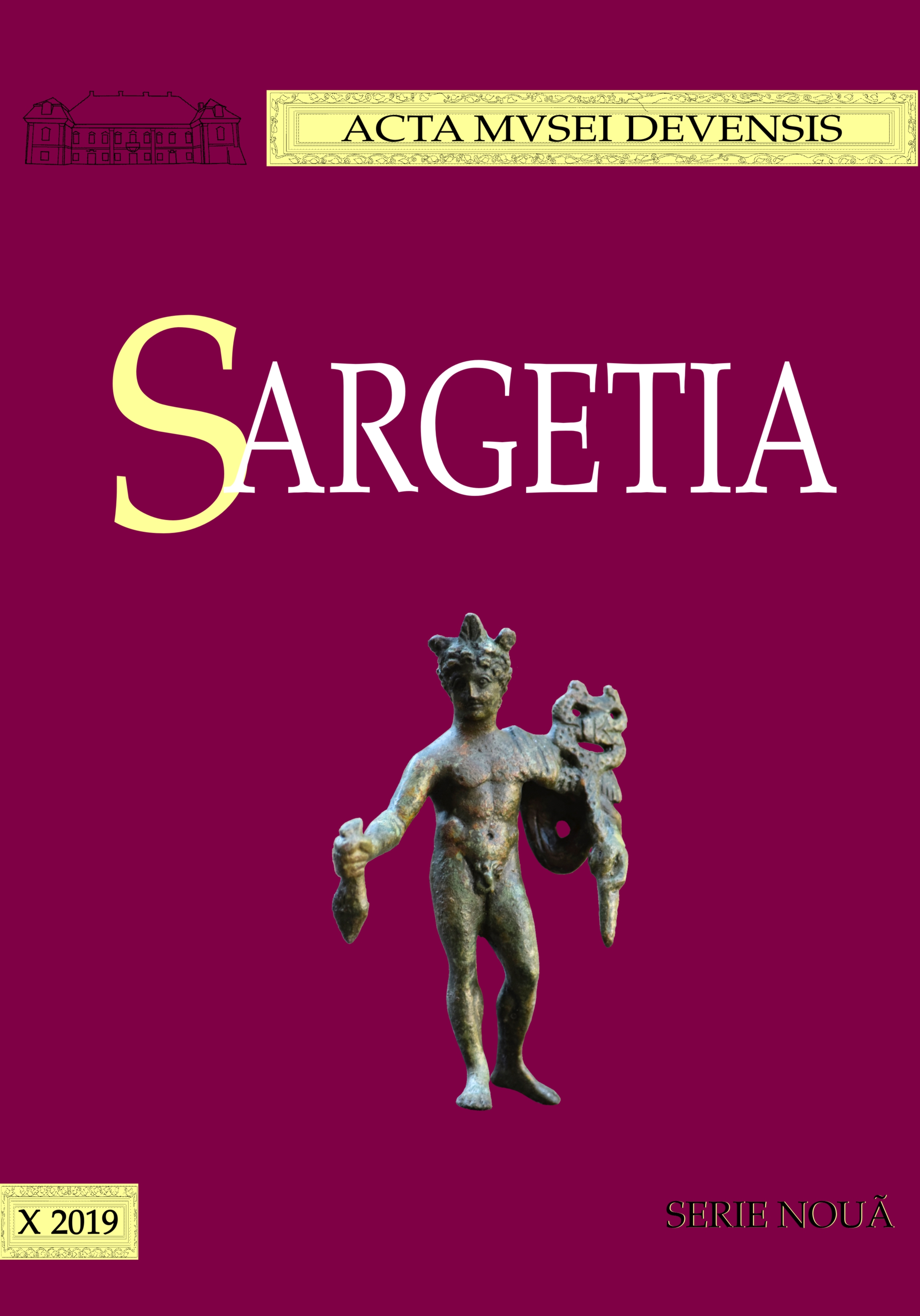Situri și descoperiri de epocă romană din
împrejurimile Potaissei (I). Date noi despre situl
dintre hotarele satelor Rediu și Mărtinești
Archaeological Sites and Roman Age Discoveries Around Potaissa (I). New Data Concerning the Site Located at the Border Between the Villages of Rediu and Mărtinești
Author(s): Andrei-Cătălin DîscăSubject(s): History, Archaeology
Published by: Editura Altip
Keywords: Roman Dacia; Potaissa; Rediu; rural settlements; archaeological mapping;
Summary/Abstract: Located in the northern area of Dacia, several kilometres northwest to the junction between the Arieș and Mureș Rivers, the Roman town of Potaissa and the camp of the Legio V Macedonica were two of the most important sites of the province. For this reason these two objectives were intensely investigated by the scholars over the last decades, while most of the smaller settlements from this area were investigated to a much lesser degree. In the current state of research there are lacking essential data about these settlements, as for example: their exact locations, dimensions and archaeological inventories. In our opinion the current state of research must be immediately improved and for doing this it is necessary, first to sum up the information from the literature, second to field walk systematically this area, and third, to map and inventorise the sites identified using GPS devices and GIS software. In an attempt to improve our data about these sites, over the last two years, were carried out several fieldwalkings in this area.At the Border between Rediu and Mărtinești villages (Pl. I/1-2, II/1, III/1-2), about 19 kilometres apart from Potaissa, was re-identified an important Roman site published by István Téglás at the beginning of the twentieth century. Despite the fact that the existence of this site was well-known by the scholars, especially by those interested in provincial Roman art, because the so called “relief of the she-hairdresser” displaying a slave women doing the hair dressing of her mistress was found here, when we started our investigations there were no precise information about the location of this settlement, the main reason being that no one carried on the work of the above mentioned archaeologist. The identification of this site was important for the topography of Roman Dacia since, alongside the “relief of the she-hairdresser”, the investigations carried out at the beginning of the last century, revealed numerous other Roman age artefacts and structures in this point, as for example, bricks with stamps of Legio V Macedonica, pottery vessels, coins and stone walls. In order to be sure that the site identified by us in 2018 is the same with the one described by Téglás in his writings we first summarized his descriptions, and then made a try to localise this site on the maps of the Austro-Hungarian Empire – the second and third military surveys. Finally, we compared these results with our data, and now there is little doubt, if any, that the site identified by us is the same with the one published by Téglás. Based on both our fieldwalkings and István Téglás’ writings one can argue now that during the Roman Age a rural settlement existed in this area, although in the current state of research it not possible to decide if it was a farm or a nucleated settlement. This hypothesis is backed by the following evidences: 1) the site’s location, at some distance from the main traffic arteries but still in an easily accessible area, on the first terrace of a secondary valley; 2) the site’s dimensions, the area on which the archaeological artefacts are to be found measuring a little bit more than 10 ha; 3) and the site’s inventory, represented mainly by construction debris (Pl. III/2), roof tiles, pottery vessels (Pl. IV/1-7, V/1-9) and ceramic pipes (Pl. II/3). The analyse of the coins, monuments and pottery fragments discovered on this site revealed that the chronology of this settlement could have begun, in the first half of the second century AD and went on, at least, until the first half of the third century AD.
Journal: Sargetia. Acta Musei Devensis
- Issue Year: 2019
- Issue No: 10
- Page Range: 87-102
- Page Count: 16
- Language: Romanian

